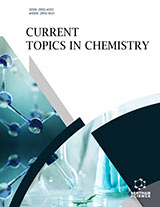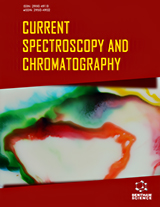Abstract
An efficient method for the determination of formaldehyde in frozen fish by SPME-gas chromatography-ion trap tandem mass spectrometry was developed and validated. Experimental design was used to investigate the effects of temperature of extraction, time of extraction and matrix stirring. The calculated regression model was used to find the experimental conditions providing the optimal SPME extraction yield. Validation was carried out in terms of limit of detection (LOD), limit of quantitation (LOQ), linearity, precision, trueness and selectivity. LOD and LOQ values in the low ng kg-1 were achieved, whereas linearity was established over one order of magnitude. Good precision was obtained both in terms of intra-day repeatability and between-day precision on two concentration levels (RSD% lower than 9%). Recovery values of 82.3±1.8% and of 95.3±1.2% (n=3) were calculated at 100 μg kg-1 and 3 mg kg-1 level. Method selectivity was demonstrated by adding 2,3,4,5,6-pentafluorobenzyl alcohol as interfering substance. The applicability of the method to the determination of formaldehyde in a number of frozen fish samples was finally demonstrated.
Keywords: food safety, formaldehyde, solid phase microextraction, derivatization, fish, gas chromatography, ion trap mass spectrometry, validation
Current Analytical Chemistry
Title: Innovative Method for Ultratrace Determination of Formaldehyde in Frozen Fish: SPME Extraction and GC-ITMS/MS Analysis
Volume: 1 Issue: 2
Author(s): F. Bianchi, M. Careri, C. Corradini, M. Musci and A. Mangia
Affiliation:
Keywords: food safety, formaldehyde, solid phase microextraction, derivatization, fish, gas chromatography, ion trap mass spectrometry, validation
Abstract: An efficient method for the determination of formaldehyde in frozen fish by SPME-gas chromatography-ion trap tandem mass spectrometry was developed and validated. Experimental design was used to investigate the effects of temperature of extraction, time of extraction and matrix stirring. The calculated regression model was used to find the experimental conditions providing the optimal SPME extraction yield. Validation was carried out in terms of limit of detection (LOD), limit of quantitation (LOQ), linearity, precision, trueness and selectivity. LOD and LOQ values in the low ng kg-1 were achieved, whereas linearity was established over one order of magnitude. Good precision was obtained both in terms of intra-day repeatability and between-day precision on two concentration levels (RSD% lower than 9%). Recovery values of 82.3±1.8% and of 95.3±1.2% (n=3) were calculated at 100 μg kg-1 and 3 mg kg-1 level. Method selectivity was demonstrated by adding 2,3,4,5,6-pentafluorobenzyl alcohol as interfering substance. The applicability of the method to the determination of formaldehyde in a number of frozen fish samples was finally demonstrated.
Export Options
About this article
Cite this article as:
Bianchi F., Careri M., Corradini C., Musci M. and Mangia A., Innovative Method for Ultratrace Determination of Formaldehyde in Frozen Fish: SPME Extraction and GC-ITMS/MS Analysis, Current Analytical Chemistry 2005; 1 (2) . https://dx.doi.org/10.2174/1573411054021600
| DOI https://dx.doi.org/10.2174/1573411054021600 |
Print ISSN 1573-4110 |
| Publisher Name Bentham Science Publisher |
Online ISSN 1875-6727 |
 9
9
- Author Guidelines
- Bentham Author Support Services (BASS)
- Graphical Abstracts
- Fabricating and Stating False Information
- Research Misconduct
- Post Publication Discussions and Corrections
- Publishing Ethics and Rectitude
- Increase Visibility of Your Article
- Archiving Policies
- Peer Review Workflow
- Order Your Article Before Print
- Promote Your Article
- Manuscript Transfer Facility
- Editorial Policies
- Allegations from Whistleblowers
- Announcements


























